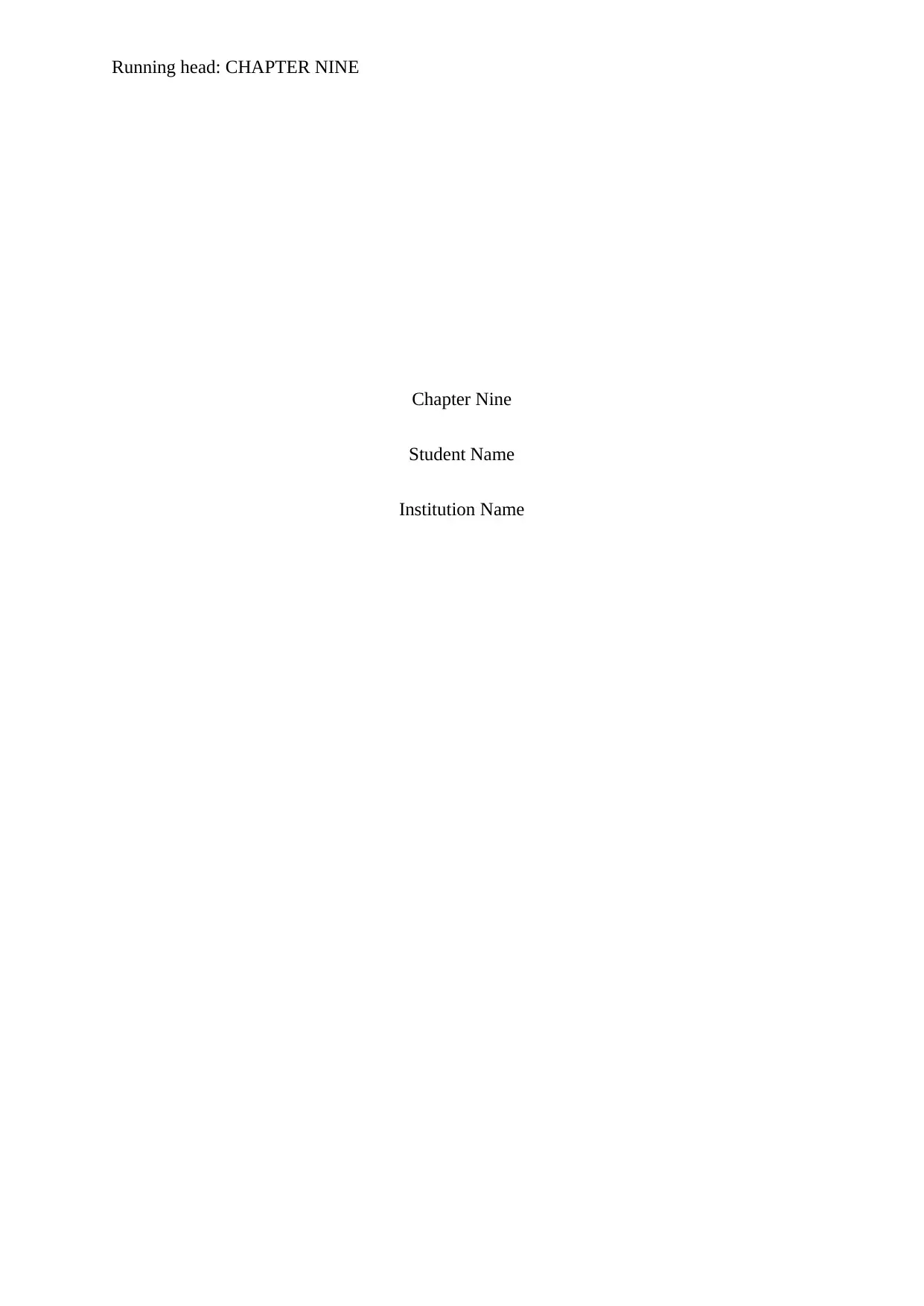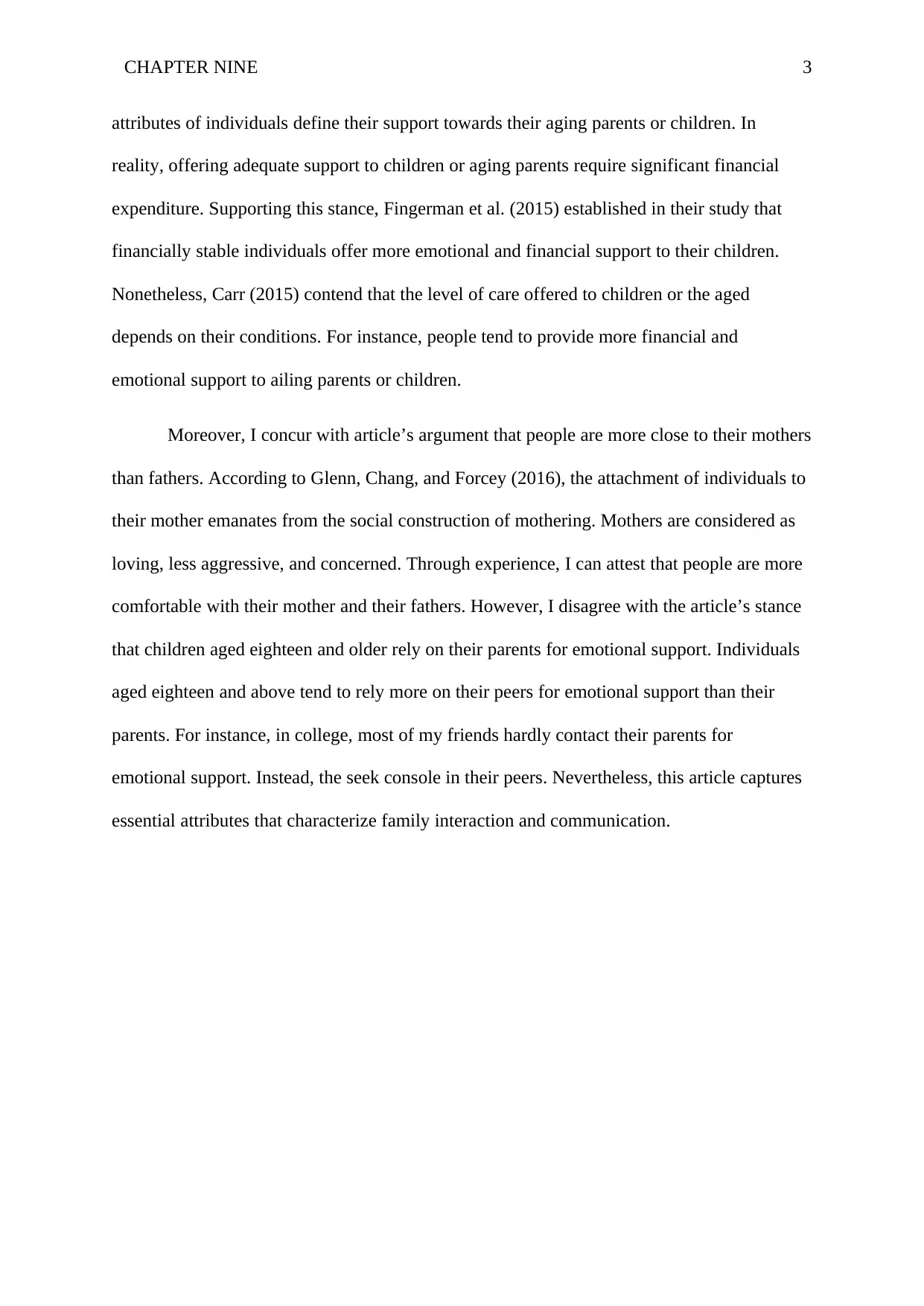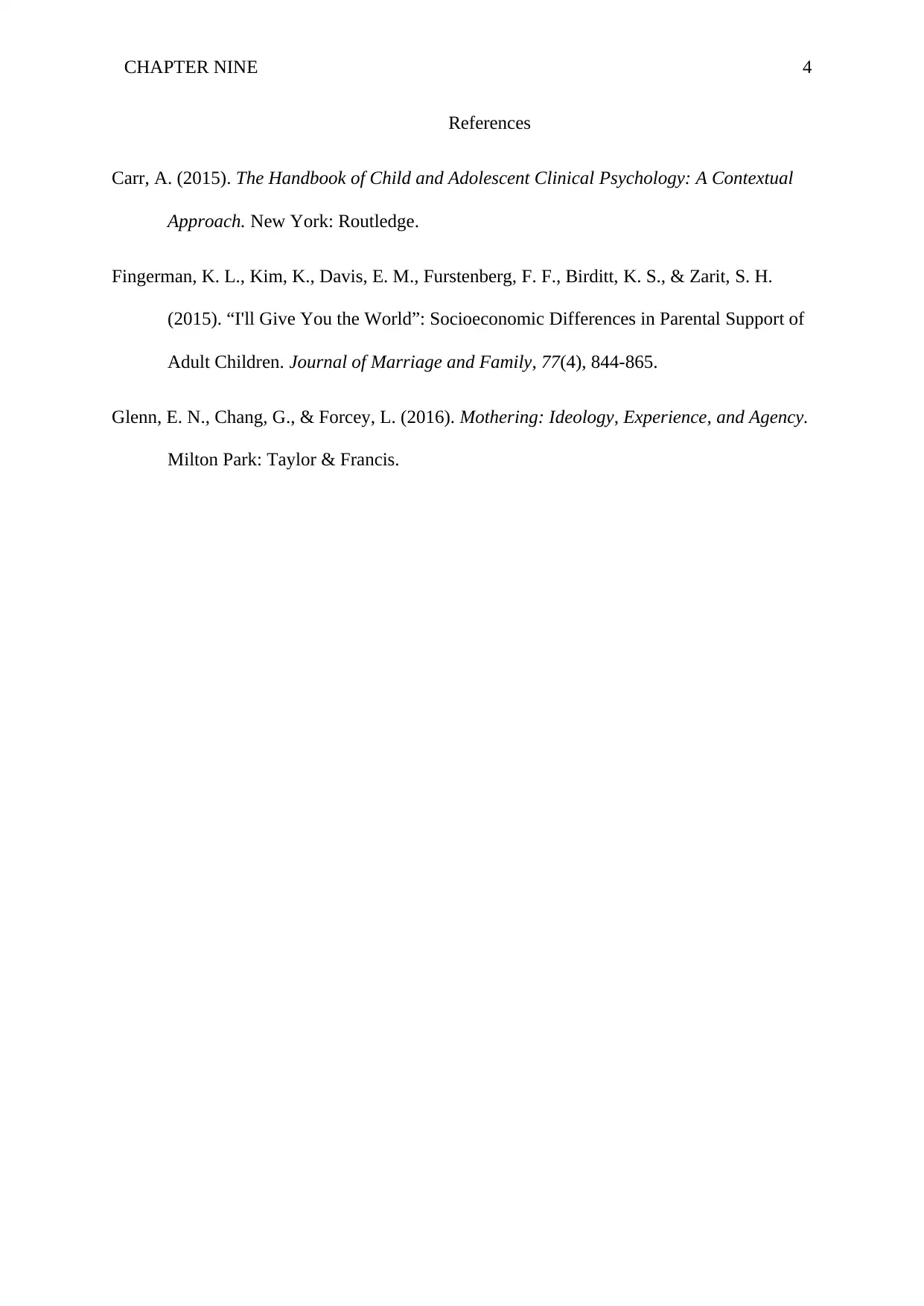Chapter Nine: A Study of Family Dynamics, Support, and Relationships
VerifiedAdded on 2023/06/10
|4
|747
|498
Essay
AI Summary
This essay provides an analysis of family dynamics based on chapter nine of a book, focusing on the transgenerational concept where family members support each other across generations. It discusses how children maintain connections with aging parents, offering emotional and financial support, and reinforces the idea of the family as a system characterized by self-regulation, interdependence, and hierarchy. The essay agrees with the argument that socioeconomic factors influence the level of support given to family members and acknowledges the closer bond individuals often share with their mothers. However, it challenges the notion that individuals over eighteen primarily rely on parents for emotional support, suggesting peers play a more significant role during that stage. Overall, the essay captures essential aspects of family interaction and communication, offering both agreement and contention with the article's arguments.
1 out of 4






![[object Object]](/_next/static/media/star-bottom.7253800d.svg)